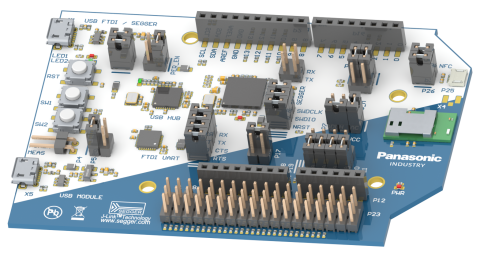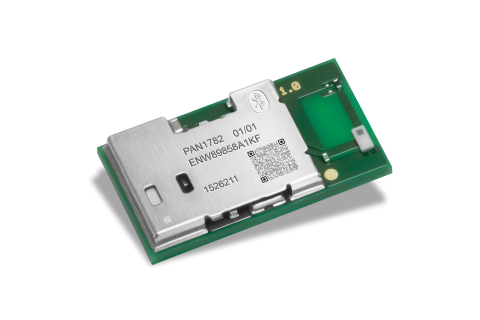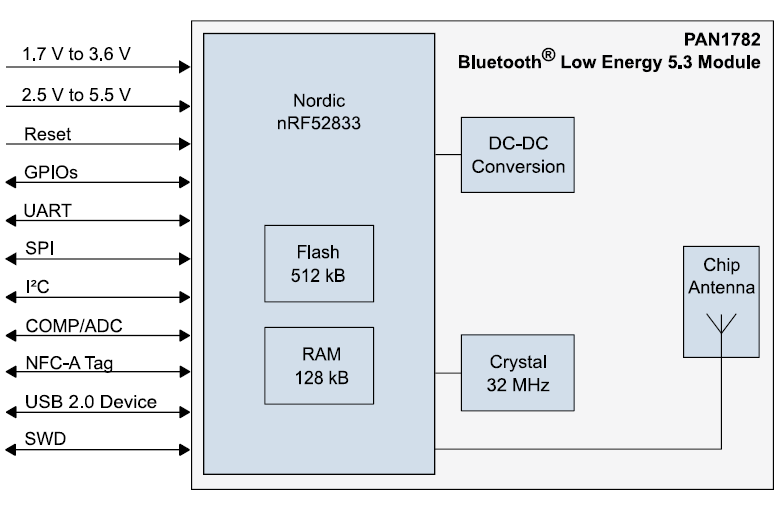PAN1782 Evaluation Series Board
The PAN1782 Series Bluetooth® 5.3 Evaluation Board features a PAN1782 Series Bluetooth® 5.3 Low Energy Module(now available with APPROTECT) based on the Nordic Semiconductor nRF52833 single-chip controller.
Easily access all the different module interfaces like USB, UART, GPIOs, current measurement pins, and Segger J-Link on-board debugger, which makes the evaluation board ideally suited for evaluating the module and rapid prototyping of products. The PAN1782 Series Bluetooth® 5.3 Evaluation Board allows easy and fast connection to a PC through a USB to UART converter. Application functions can be tested quickly and easily without much wiring effort. All GPIOs are led out via pin headers, and the Arduino form factor allows the connection of shields available on the mass market.
Part Number:
ENW89858AXKF - 1x PAN1782 Series Evaluation Board (Arduino Form Factor)
PAN1782 Series Evaluation Board Features
- PAN1782 BLE module with improved APPROTECT
- Segger J-Link On-board Debugger
- FTDI UART-USB Converter
- 2 User Buttons
- 2 User LEDs
- Native USB interface
- NFC Interface
- Access to all GPIOs
- Arduino Form Factor
PAN1782 Block Diagram

PAN1782 Evaluation Series Board
The PAN1782 Series Bluetooth® 5.3 Evaluation Board simplifies testing and prototyping with its comprehensive access to interfaces like USB, UART, and GPIOs, featuring an on-board Segger J-Link debugger and Arduino form factor for easy PC connectivity.
Resources
More About the PAN1782 Series Bluetooth® 5.3 Low Energy Module

The PAN1782 Series Low Energy RF Module is based on the Nordic nRF52833 single chip controller and in combination with the LE coded PHY, making this module suitable for applications where long range is required. The Bluetooth 5.3 features additionally a higher symbol rate of 2 Mbps using the high speed LE 2M PHY or a significantly longer range using the LE coded PHY at 500 kb/s or 125 kb/s. The new channel selection algorithm (CSA#2) improves the performance in high interference environments and allows for much larger amounts of data to be broadcasted in connectionless scenarios.
